Context
Corporate culture in Japan created the most overworked city, Tokyo and the most vacation deprived country. The culture of overworking causes stress leading to depression, burnout, brain and heart diseases and the most extreme, karoshi, death by overwork. Current governmental solutions based on global corporate contemporary conventions of time off and vacations does not work due to the ingrain psychological trait of Bushido, shame and guilt culture in the Japanese stemming back to Edo Period Japan. Ideals of honor and loyalty has stayed throughout various eras of the Rising Sun, where the “salary-man often thinks he too must work hard or else he will feel guilty and to deviate is disloyal”.
The Speculation
As a counter proposition to the failed work style reform bill, this thesis speculates that a different type of ‘vacation’ is needed in order to provide the workers with a guilt and shame free break. A holiday that works with the ingrained edo concepts instead of against them. The thesis speculates that the government will replace the failed bill with a “work style reform holiday”, where the Japanese salaryman escape to without the feeling of guilt or shame. It takes inspiration from the successes of several companies and the widespread acknowledgement of the failure of the work style reform bill, to question if this uniquely Japanese holiday that is rooted in edo concepts might be an alternative solution.
Opposites Forming a Whole
The concept of opposites forming a whole is a recurring motif inherent throughout the Edo period to modern Japan. The façade of Japanese culture is seen as ordered and structured in the eyes of society. However, built within this order are various degrees of flexibility of exploration and expression.
The Holiday
The holiday takes place in Sanya, the currently obliterated district of Tokyo which is occupied majoritively by the former day-labourers and homeless whom are outcasted by society. The Jouhatsu (evaporated people) escape their lives to live in the shadows of Sanya. Sanya’s identity is expunged from official records due to its association with negative things such as the “lower caste” workers and an execution ground.
The project is conceived as a holiday instrument. A new core of Sanya that stretches altruism from Tokyo to Sanya’s urbanscape while renewing its temporary inhabitants, the salarymen through a balance. Consisting of 5 components organised as layers in the building, a cableway system that connects Tokyo to Sanya and dashi floats that flows into the network of Sanya.
Conclusion
The concept of opposites forming a whole translates into a transformative architecture where the parts of the building is stacked distinctly where each layer can be used in any manner that the salaryman wishes. The salaryman enters the building through the cableway connecting them to the reception and their place of stay for the holiday. Layers above this are recreational spaces of self-realization, whereas the layers below connects the salaryman to the community assistance to Sanya, a duality of being inward-looking and outward-looking, gelling together as an alternative way of the Japanese Holiday. This reimagines an alternative hierarchy in the building where the layered stack does not need to be in sequential order, but the freedom of movement like a holiday.
The salarymen community comes in and have a balance between work and play to help and regenerate the impoverish Sanya, and also feel that they are doing good with leisure and release activities.


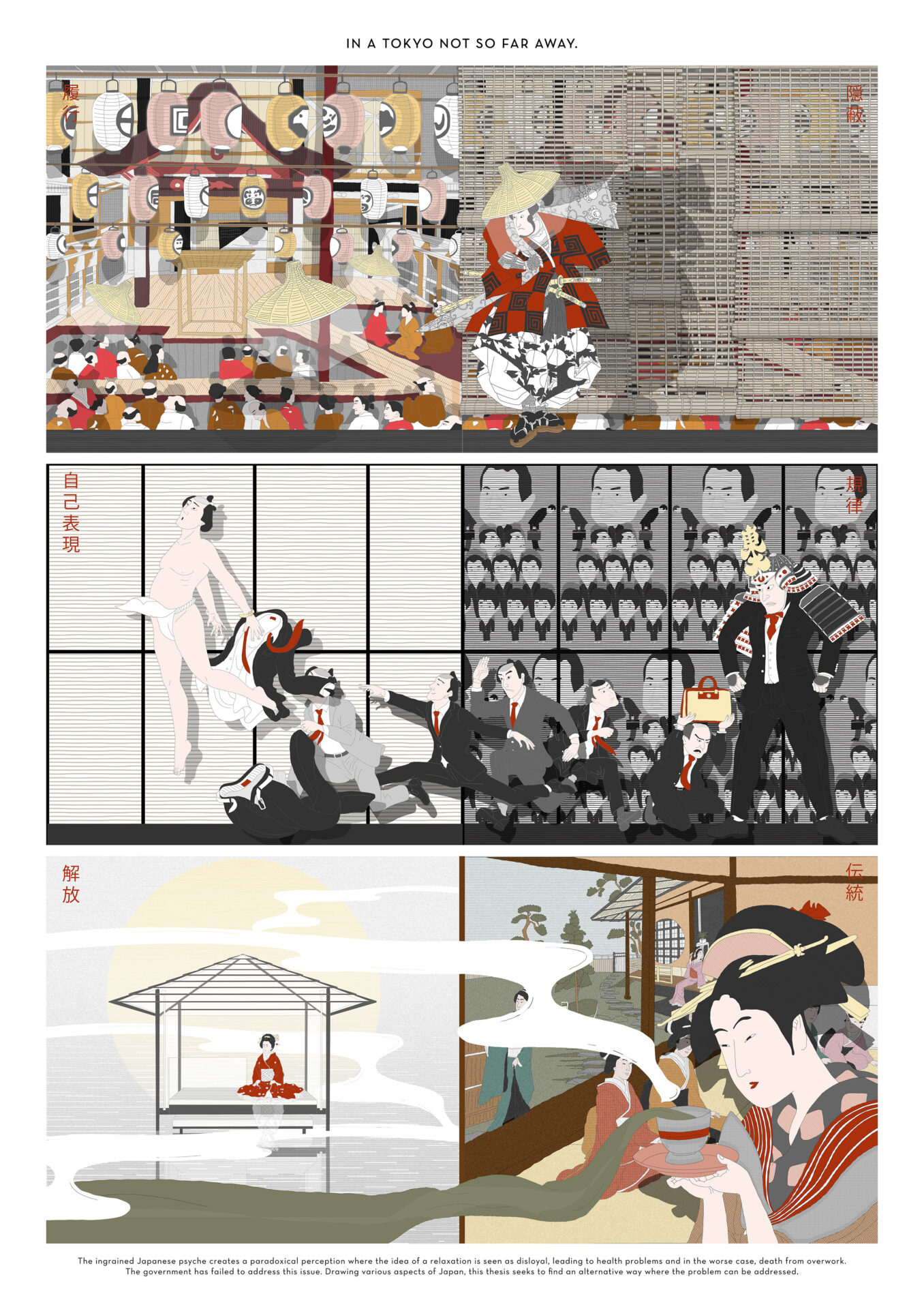
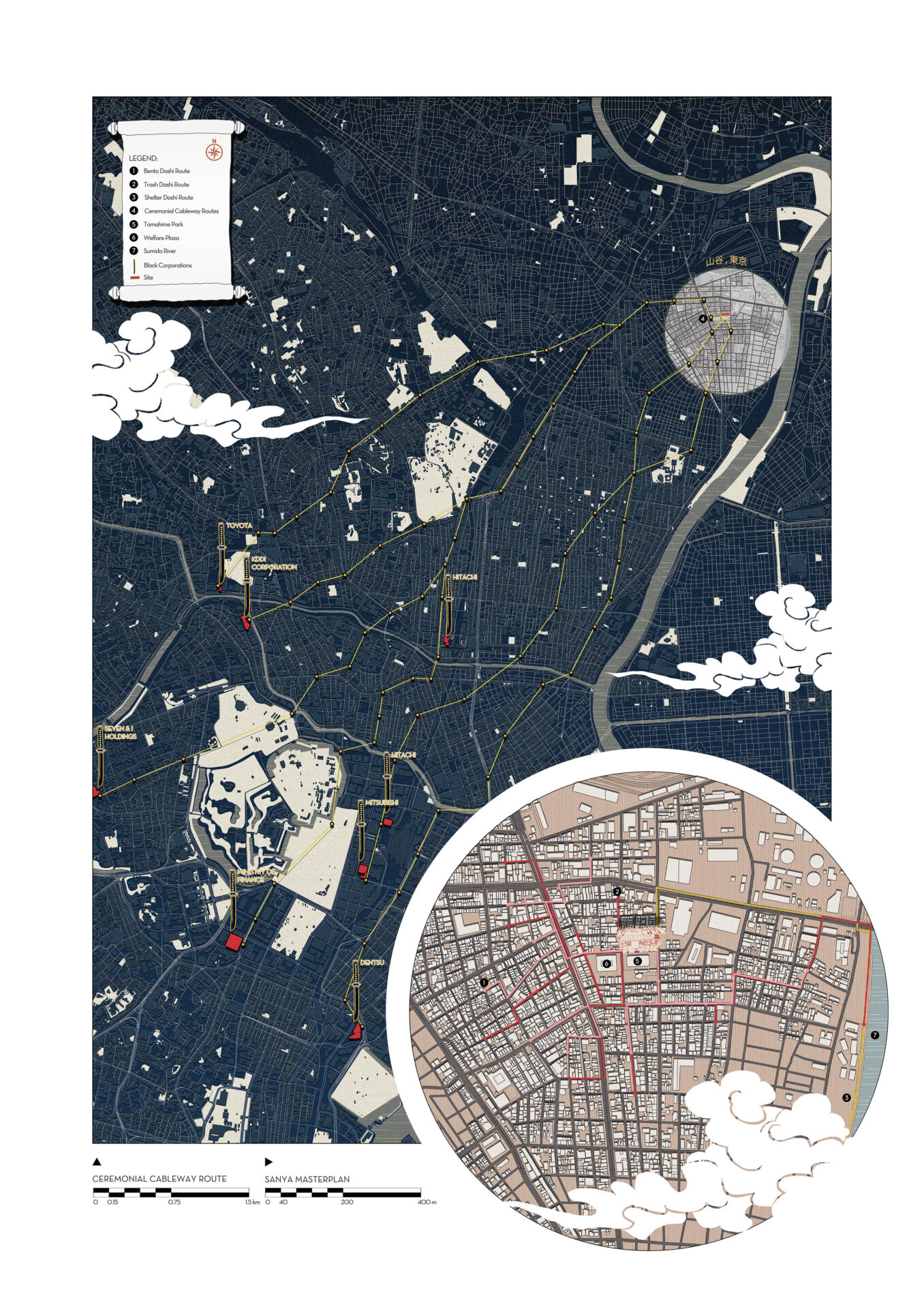
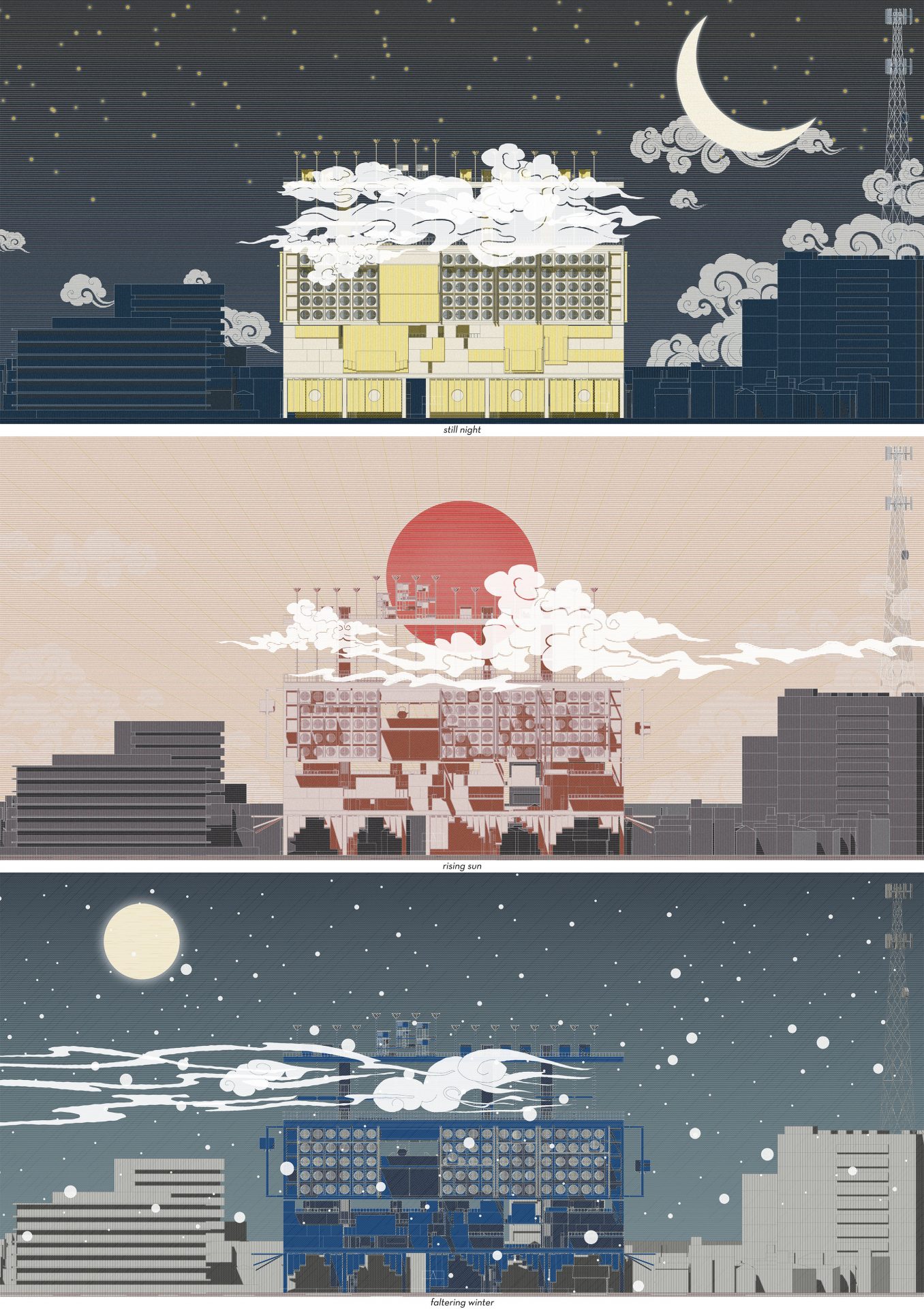
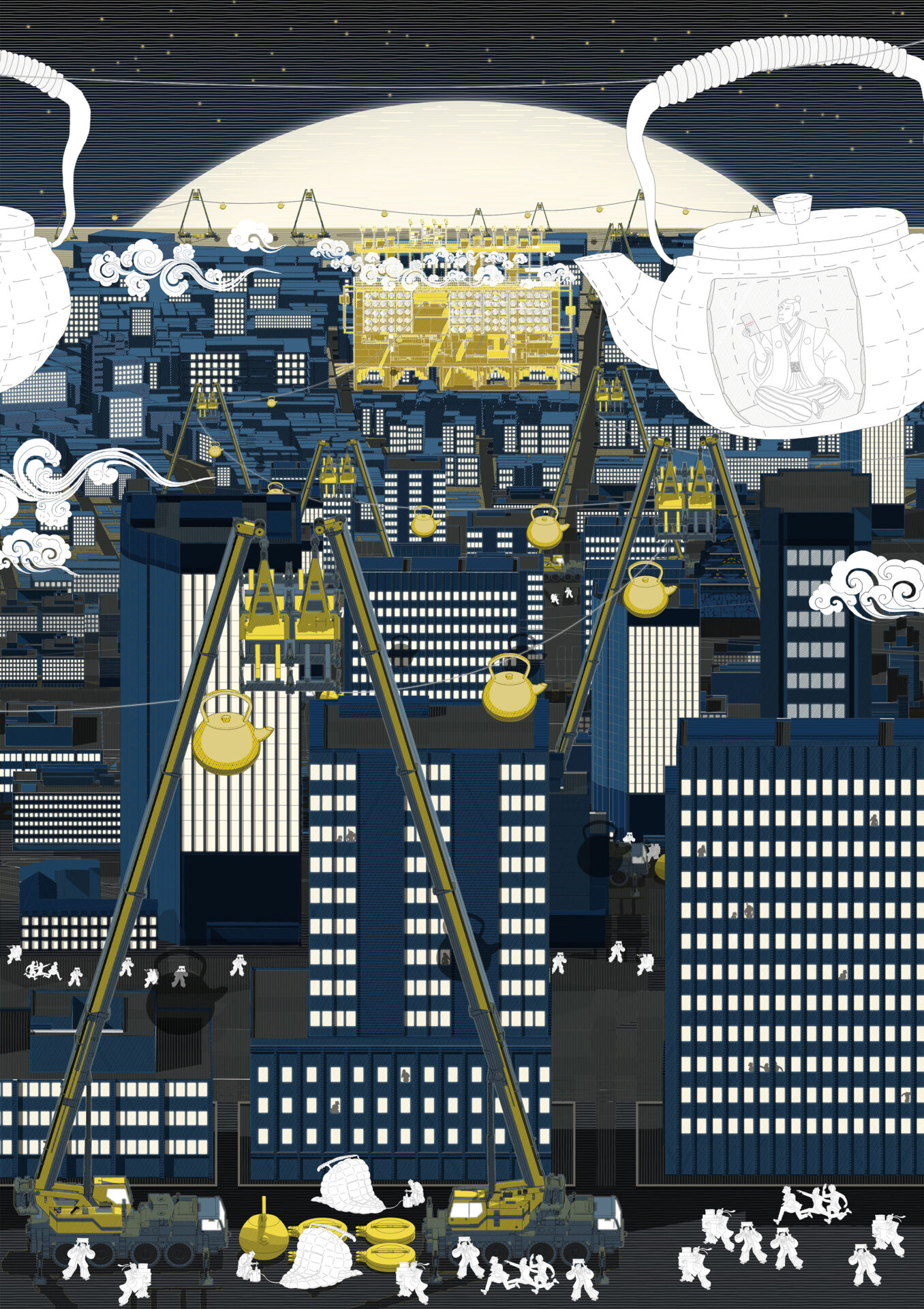
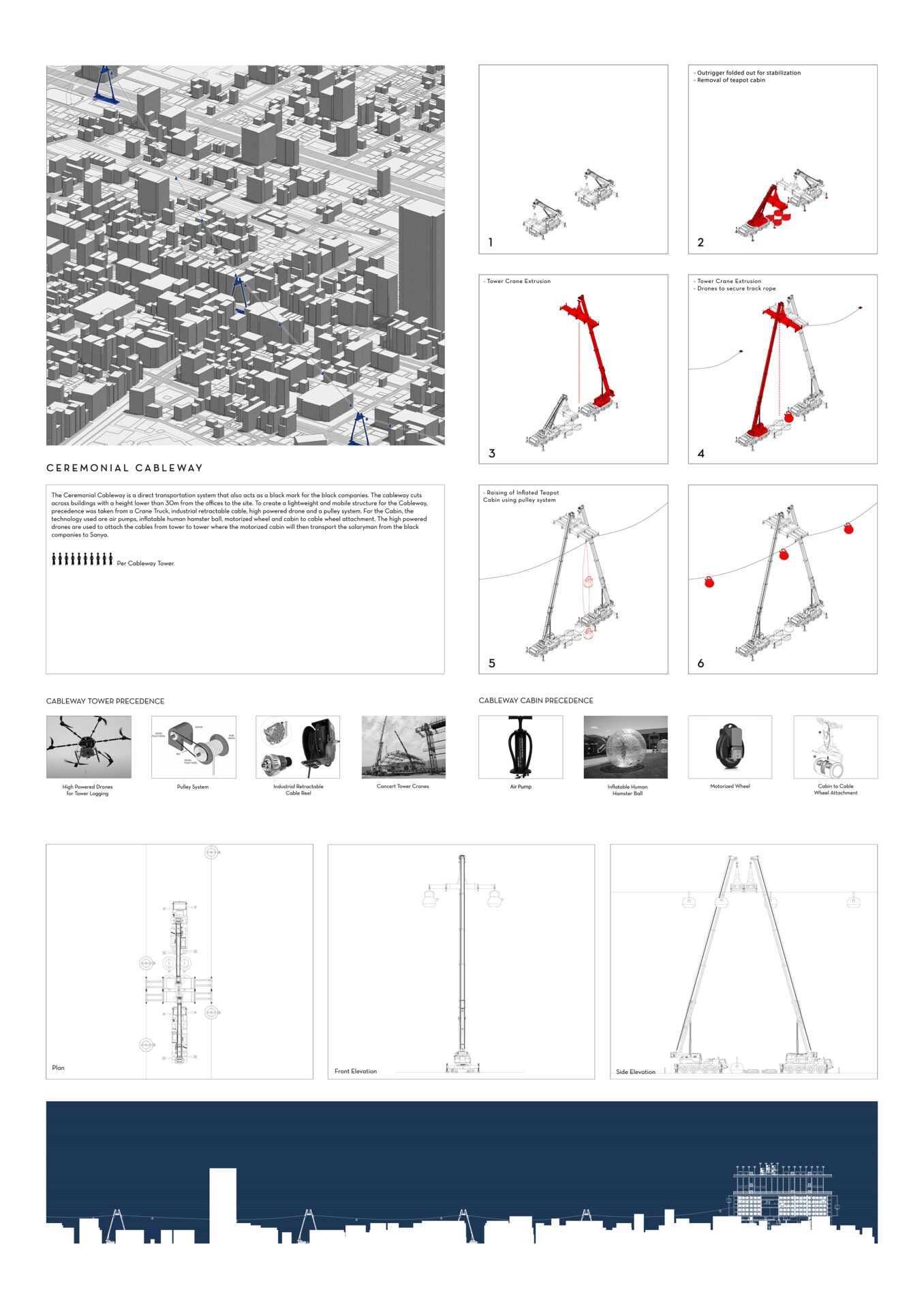
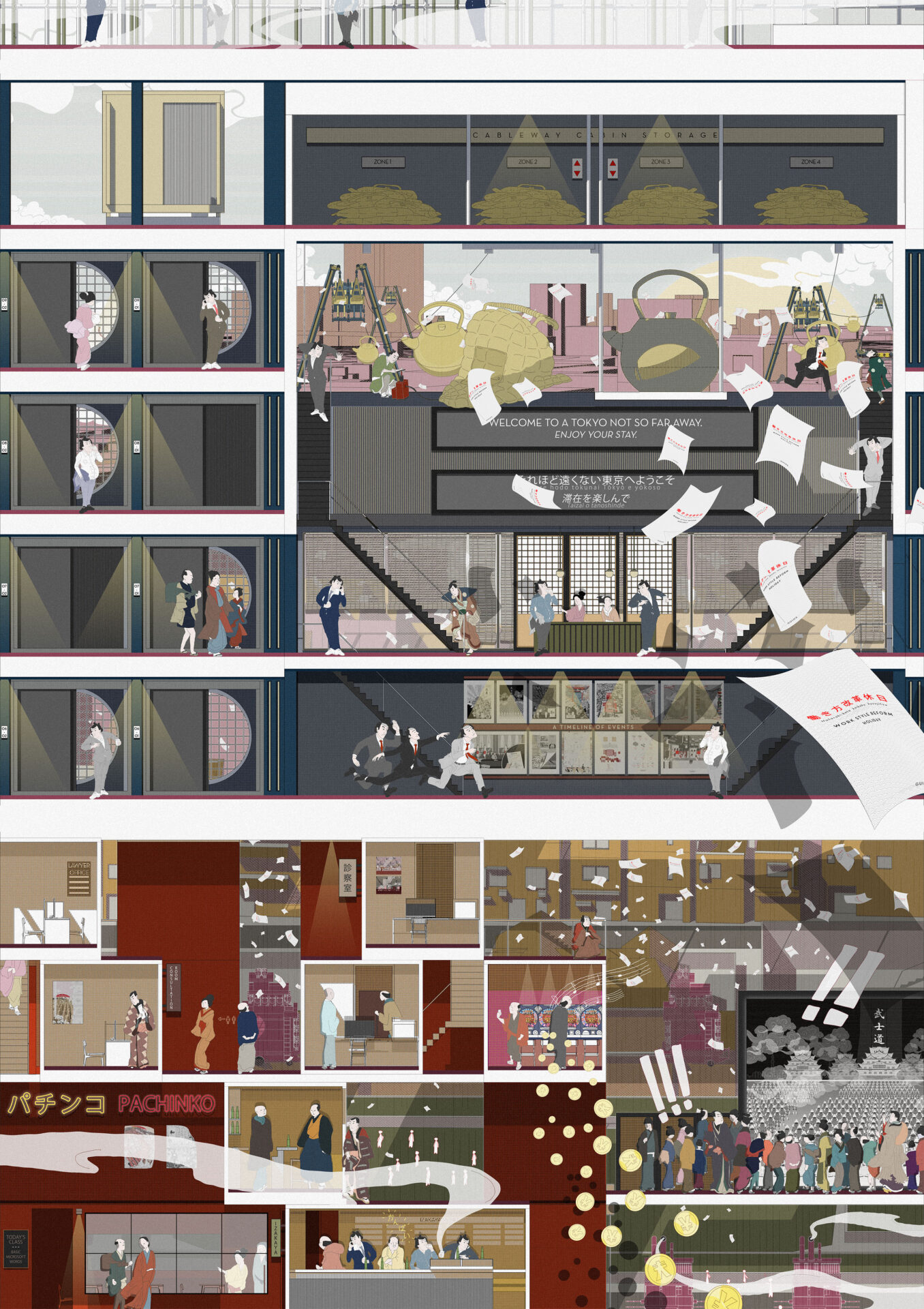
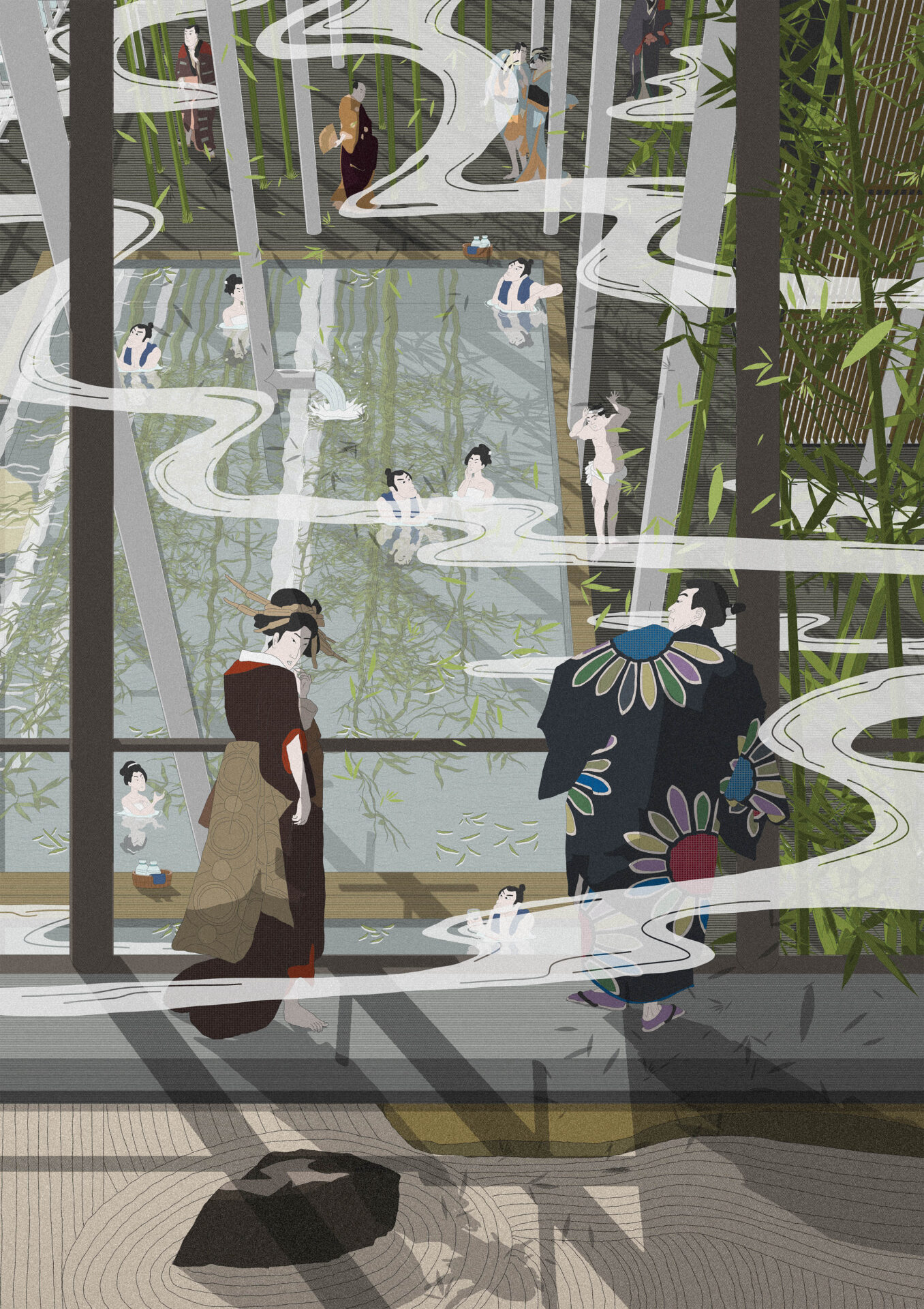
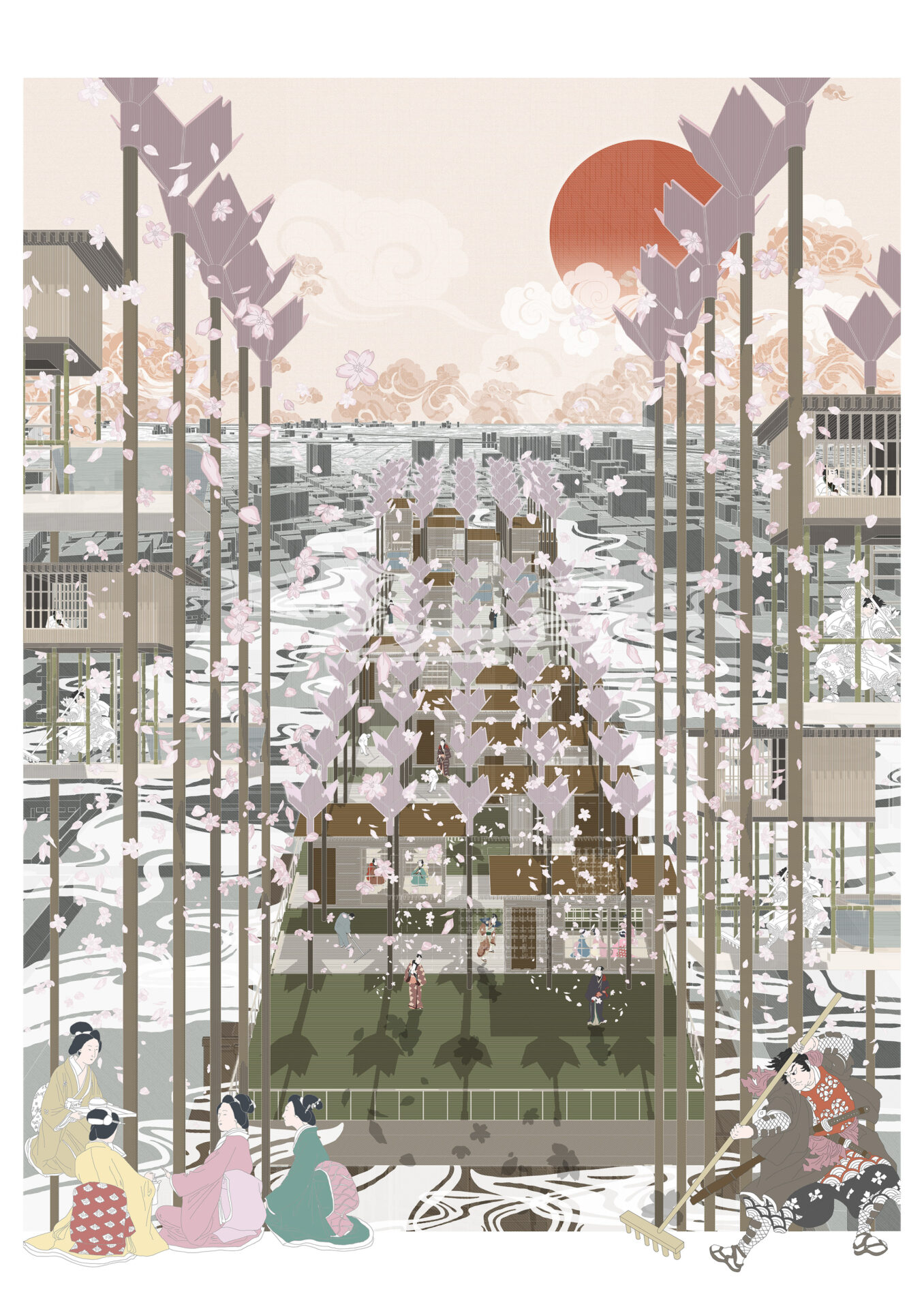
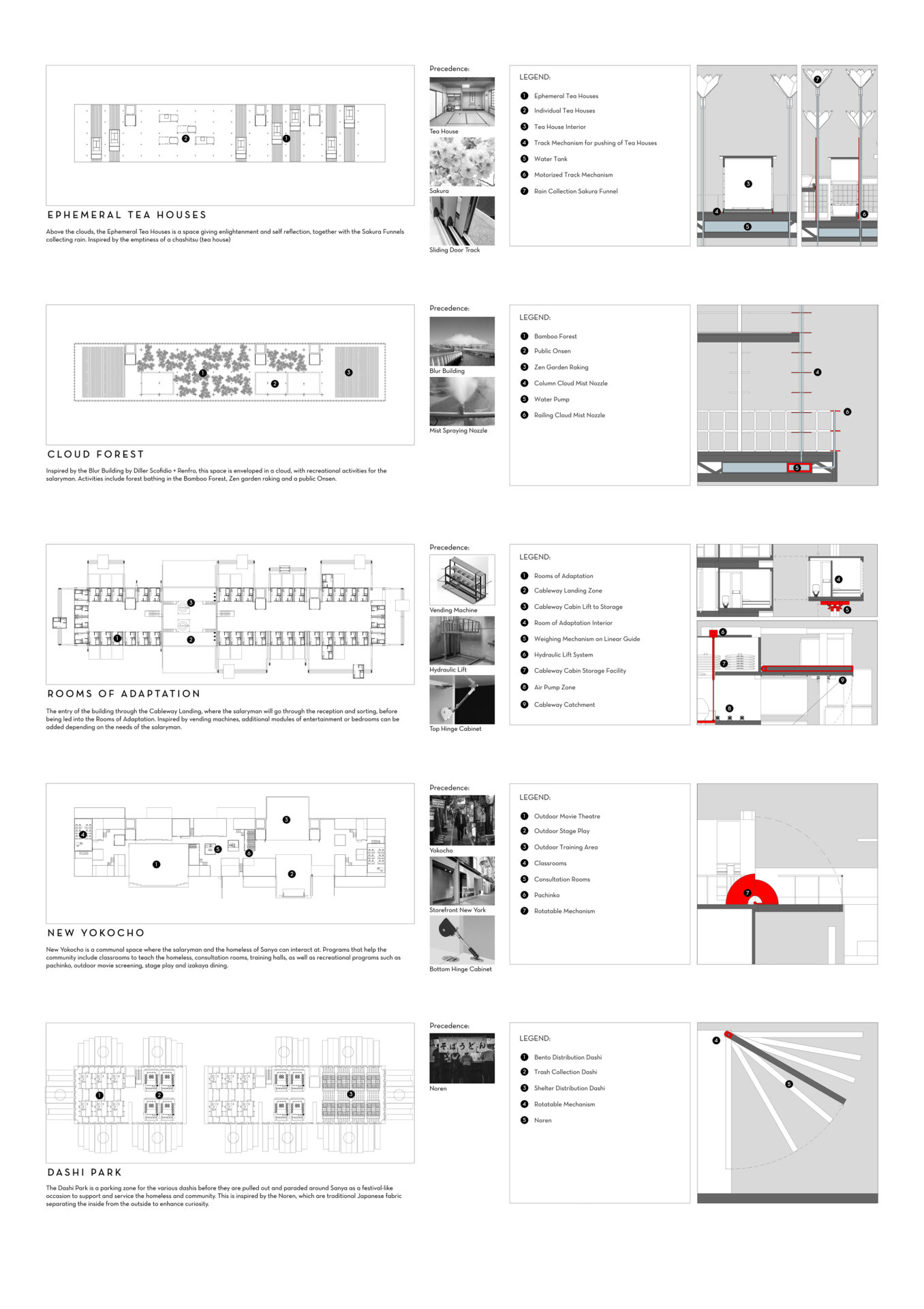
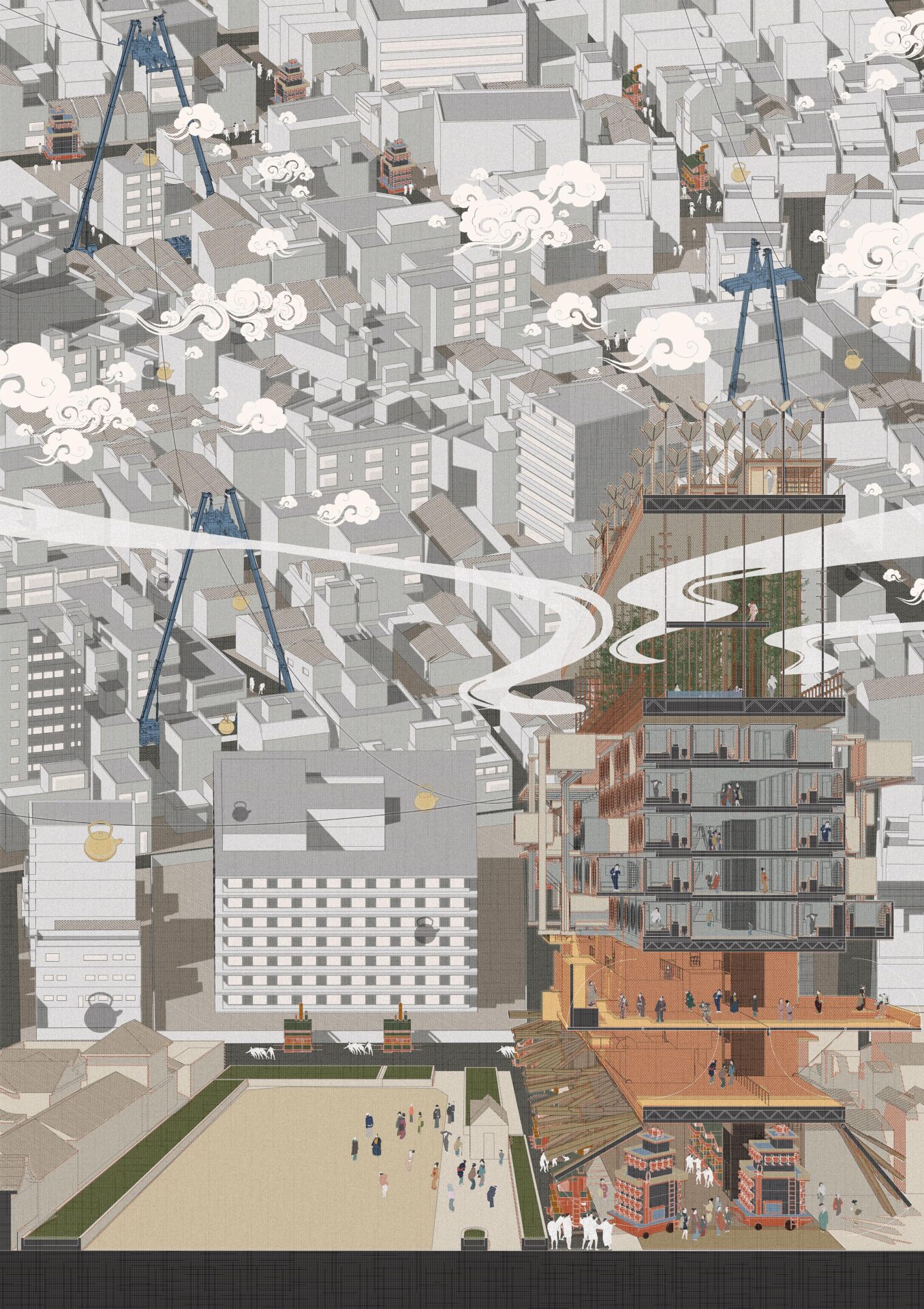
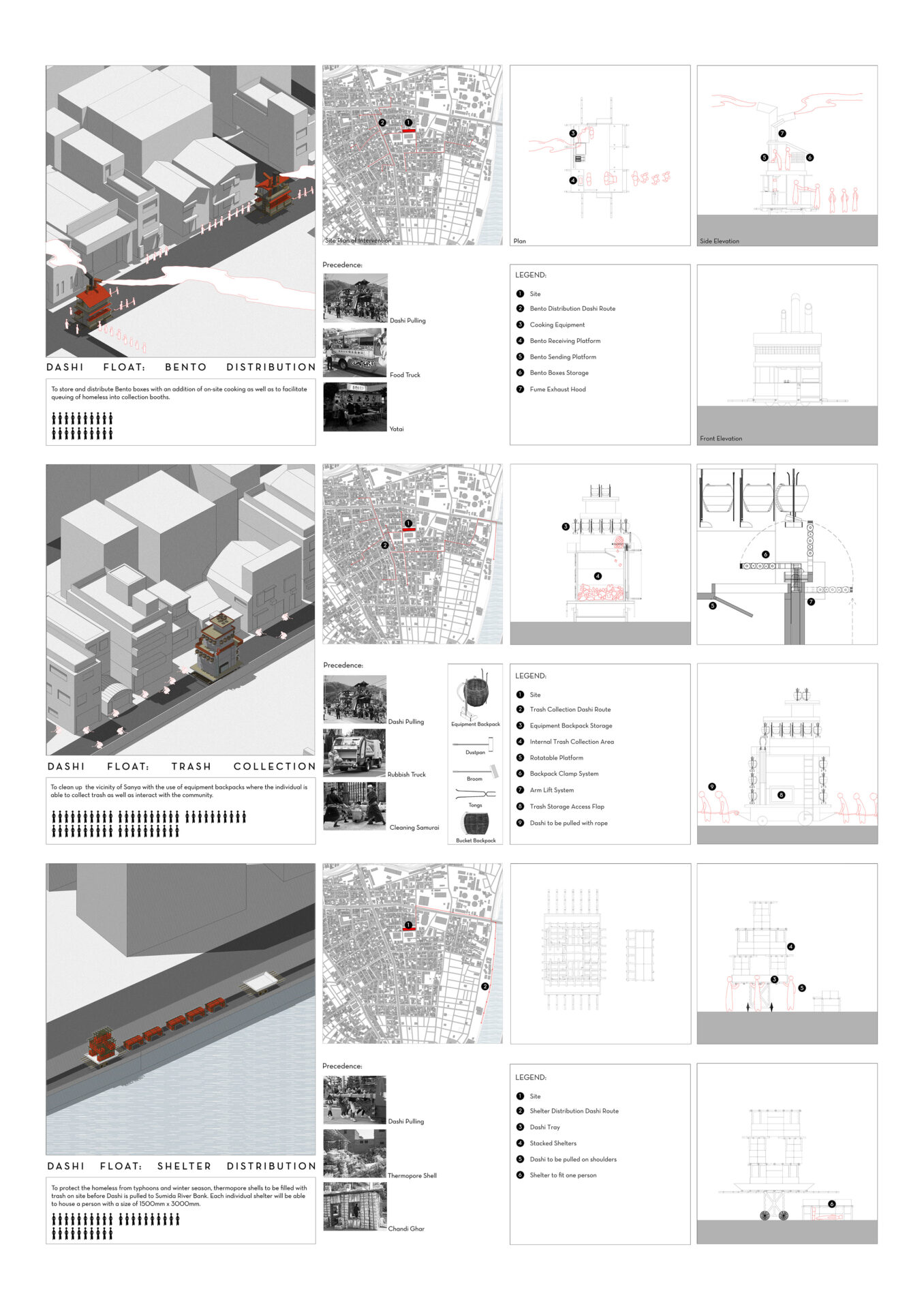
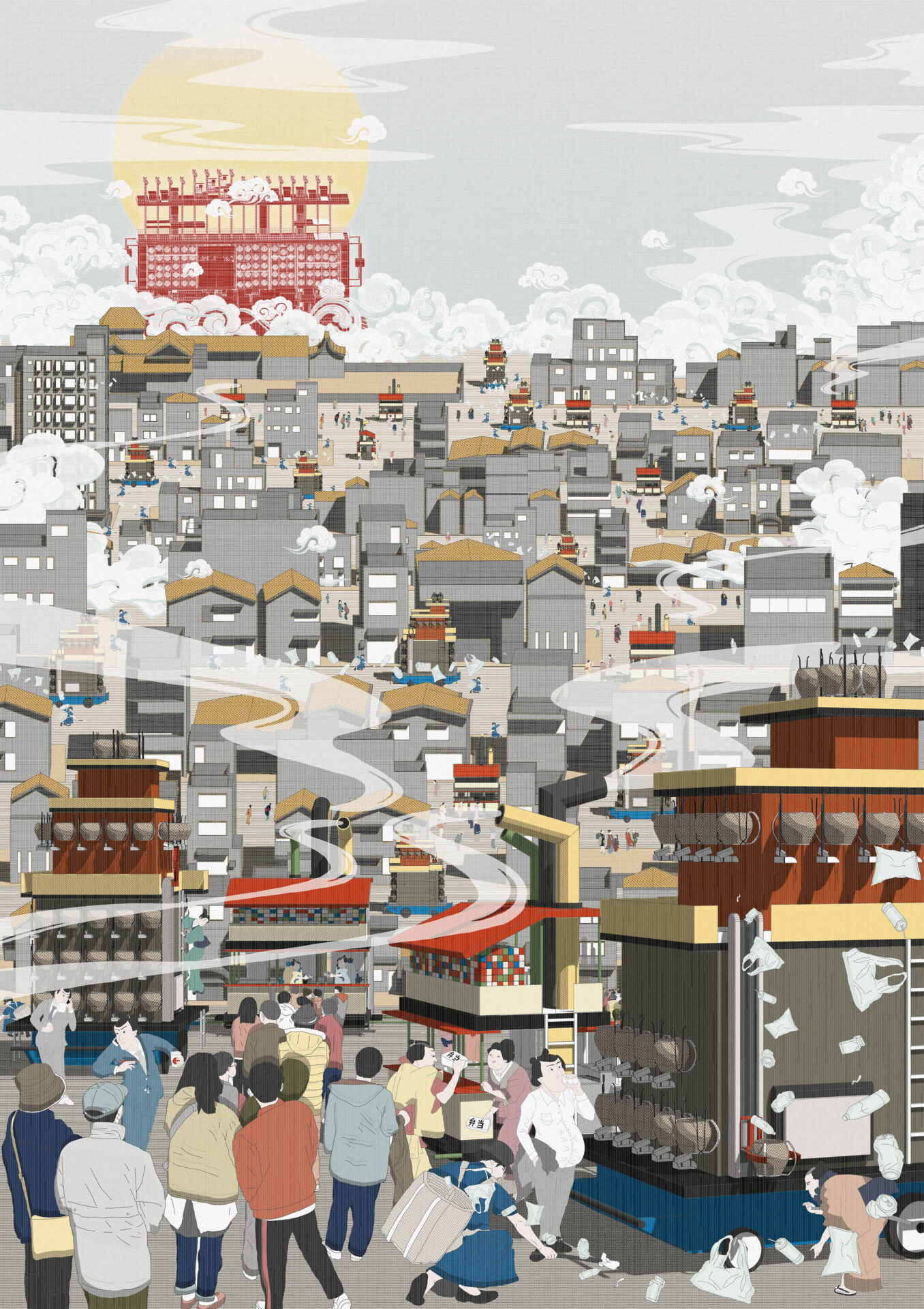
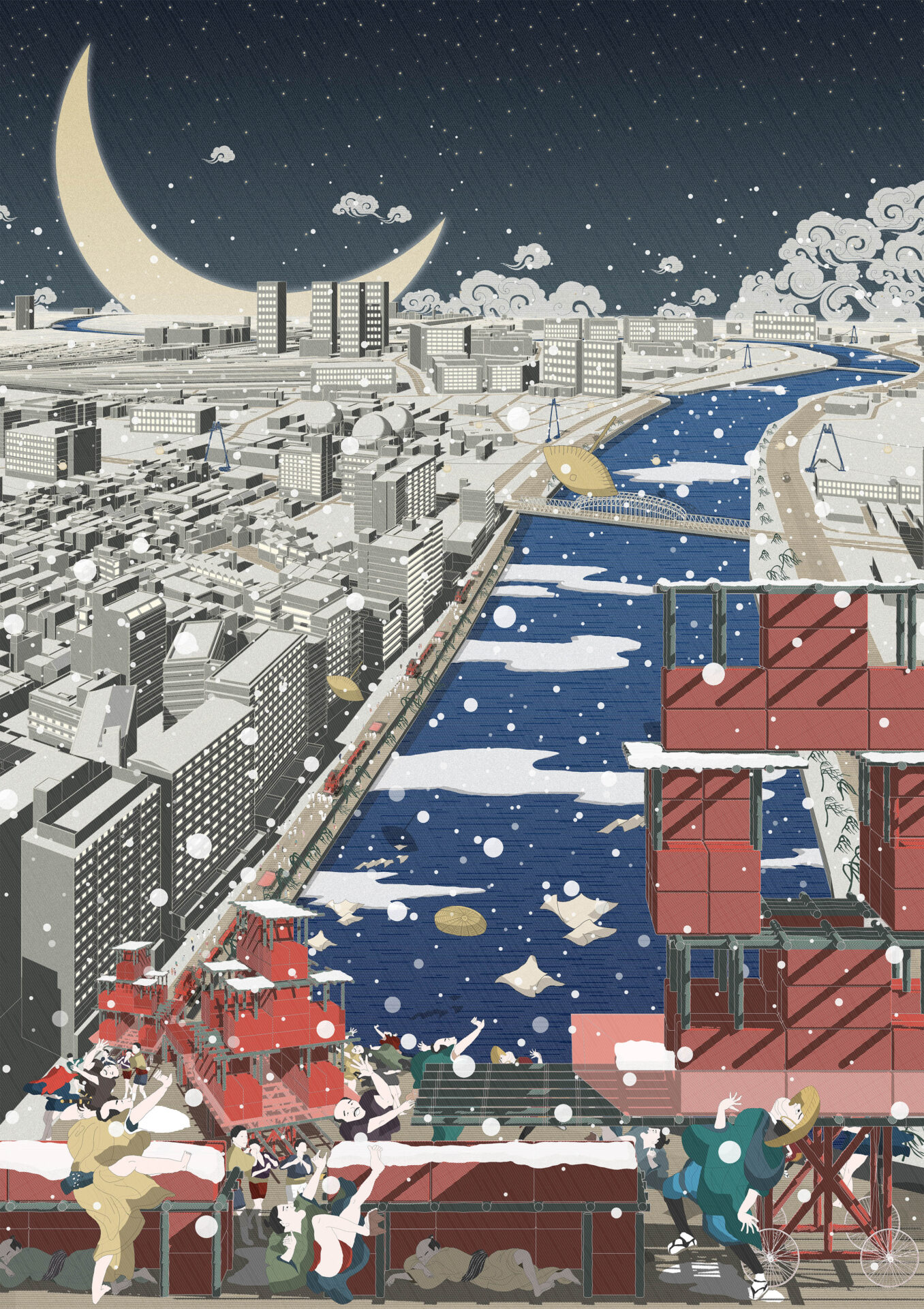

Supervisor's comments:
In corporate Japan, taking time-off or a going on vacation are often seen as dishonourable practices. This proposal explores an alternative from of escape that is deemed ‘acceptable’ – A new ‘work-style reform holiday’ developed from traditional principles, where ritual & controls, provides an armature for recuperation and expression.
The poetry of the project lies in the vivid way in which architecture is conceived as a series of apparatus, transforming Edo Japan’s traditions, symbols, spaces, objects and practices, into a contemporary, quasi fantastical, culturally responsive, ‘Machine for Holidaying’. The proposal is beautifully represented, combining elements of conventional architectural representation, traditional Japanese art, and manga, and executed with wit, intelligence, humour and poetry.
- Adj. Asst. Prof. Peter Sim